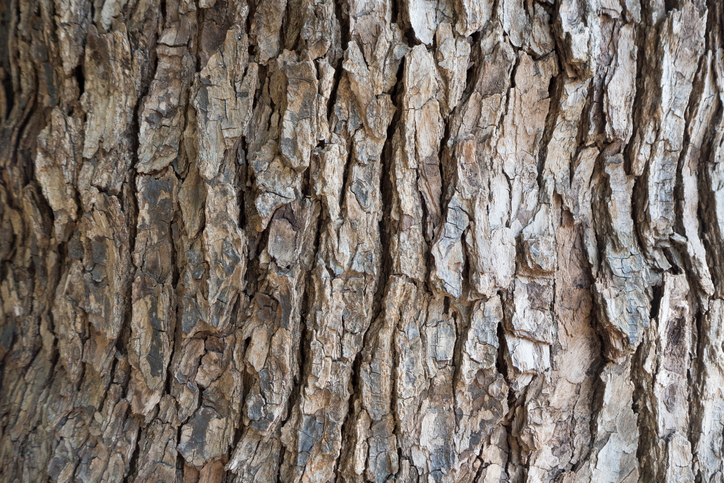-

The Bark tree image close up in the wood The bark of a tree is very important to the survival of the tree. Like the human skin, the bark of a tree protects it from foreign elements that could be harmful such as, sunlight, drying by the wind, fungi infection, insects and birds. Sometimes, the bark of the tree gets attacked by external factors and in most cases, these attacks can be fatal to the trees. Most animals leave distinctive signs on trees. Squirrels chew off barks, birds stipe barks to be used as nests and deer rub their antlers on the bark and cause it to wear out. The following includes common causes of damages to tree barks.
DAMAGE BY DEER
According to Massachusetts Department of Energy and Environmental Affairs, there are about 85000 to 95000 deer state-wide and in Plymouth, residents have complained severally of deer making a meal out of their plants in the backyard. Not only do deer eat seedlings of new trees, but they also rub their antlers on the bark of older trees causing it to wear out.
Bucks rub their antlers on the bark of trees to show their dominance, intimidate other buck and mark their territory. When deer rub their antlers on the bark of trees, they may scrap all the way to the xylem and cambium removing the phloem. The phloem carries manufactured food such as sugars from leaves to the root. If the bark is scrapped all the way around the stem (girdling), the transportation system may be cut off completely this can lead to decaying or dying of the roots and eventually the tree.
Destruction of trees by deer can be avoided through a number of ways some of which include baited electric fence, predator urine, ultrasonic repellents, dogs and contact repellents. It will be wise to rotate the use of these methods periodically because white-tailed deer, usually found in Plymouth, are very smart and will quickly figure out a way to avoid most traps.
DAMAGE BY SQUIRRELS
Squirrels are a major pest to property owners; they gnaw at bark and chew of branches on trees. Usually, the activities of the squirrels are harmless to the trees but in some cases, these activities can completely destroy the tree involved.
During periods of hot, dry seasons, squirrels may strip away the bark of a tree in order to lap up the sweet in layers of the wound. Most trees will normally recover from this in the dry season; building up calluses around the wounded area, in the rainy season, the wound, wetted by the rain water will attract carpenter ants which cause tunnelling in the wood and may completely destroy the stem. Also, if a squirrel gnaws all around the stem causing a ring stripping, this may cause the transportation of sugars from the leaves to the roots to be cut off, which can lead to the death of the tree.
Damage by squirrels can be prevented by providing a water source for them during the dry season. When they have a source of hydration, they are less likely to gnaw on trees. Also, fencing and wrapping trunks with metal sheeting will be effective. Remember to reach out to an arborist before picking a method.
DAMAGE BY BIRDS
Birds attack trees for different reasons; while most species of birds attack trees to get barks to build nests, others such as the woodpecker attack birds to feed.
Woodpecker can cause serious damage to trees and it some cases may cause disease and even death of the tree. Their damage appears in form of holes in the bark of trees, holes may be clustered or in a straight line. Sometimes, they attack trees when going after insects living in the tree, other times, they create holes in the stem of the trees in order to get sap in the phloem. The damages done by woodpeckers create wounds that allow the activities of insects that could damage the tree. Other birds attack honeysuckle trees to get barks for building nests and they could also cut off the transport of sugar from leaves to roots, thus, damaging the tree.
The activity of woodpeckers can be prevented by scaring them away. This can be done by hanging mirrors, CDs and other reflective objects in the trees, other methods include using decoy predators such as plastic hawks can be effective. It is illegal to kill woodpeckers as they are protected by federal laws.
DAMAGE BY HUMANS
Intentionally and sometimes unintentionally, humans can permanently damage a tree. Some humans while tending to the yard or even the trees in the compound may cause damage to the tree.
Some human activities such as staking, mulching and girdling may destroy the tree, especially when not done by a professional. This is why it is advised that property owners reach out to certified arborists whenever they need to work on their trees. This will prevent owners from unintentionally damaging the tree. To assist a tree in growing taller, protect it from winds, many homeowners stake the tree, while this is done in goodwill, they sometimes forget that some trees do not require staking, thus, destroying the tree. Similarly, property owners girdle their trees. This is done by protecting the tree’s trunk base with metal or plastic in order to avoid damaging it with yard tools. But, this method, when not properly done, causes the tree to get strangled, cutting off the transportation of manufactured sugars from the leaves to the tree, thus killing off the tree.
Damage by humans can be prevented by getting professional tree trimmers, arborists and so on to work on the tree and yard, rather than doing it yourself.
A tree owner is responsible for the health of the tree and since trees are very important especially for their scientific and aesthetic benefits, it is important to take special care of them by taking immediate steps such as calling for an arborist when an animal or insect activities are noticed, this will prevent the trees from getting diseased or from dying.
Are Trees Damaging Your Property?
Sometimes one bad tree can damage your entire landscape and even your home. Consult with our trained staff for a free assessment
Available 24/7 for Emergency Service
Did lightning strike? That’s our specialty. One call and we will dispatch our emergency response team to handle all your emergency tree service needs
Hours
Monday: 7:30am - 6:30pm
Tuesday: 7:30am - 6:30pm
Wednesday: 7:30am - 6:30pm
Thursday: 7:30am - 6:30pm
Friday: 7:30am - 6:30pm
Saturday: 7:30am - 6:30pm
Sunday: Closed
We Are Serving Plymouth, MA | Milton, MA | Canton, MA
Copyright © 2022 - Lighting Strikes Tree LLC. All Rights Reserved.

